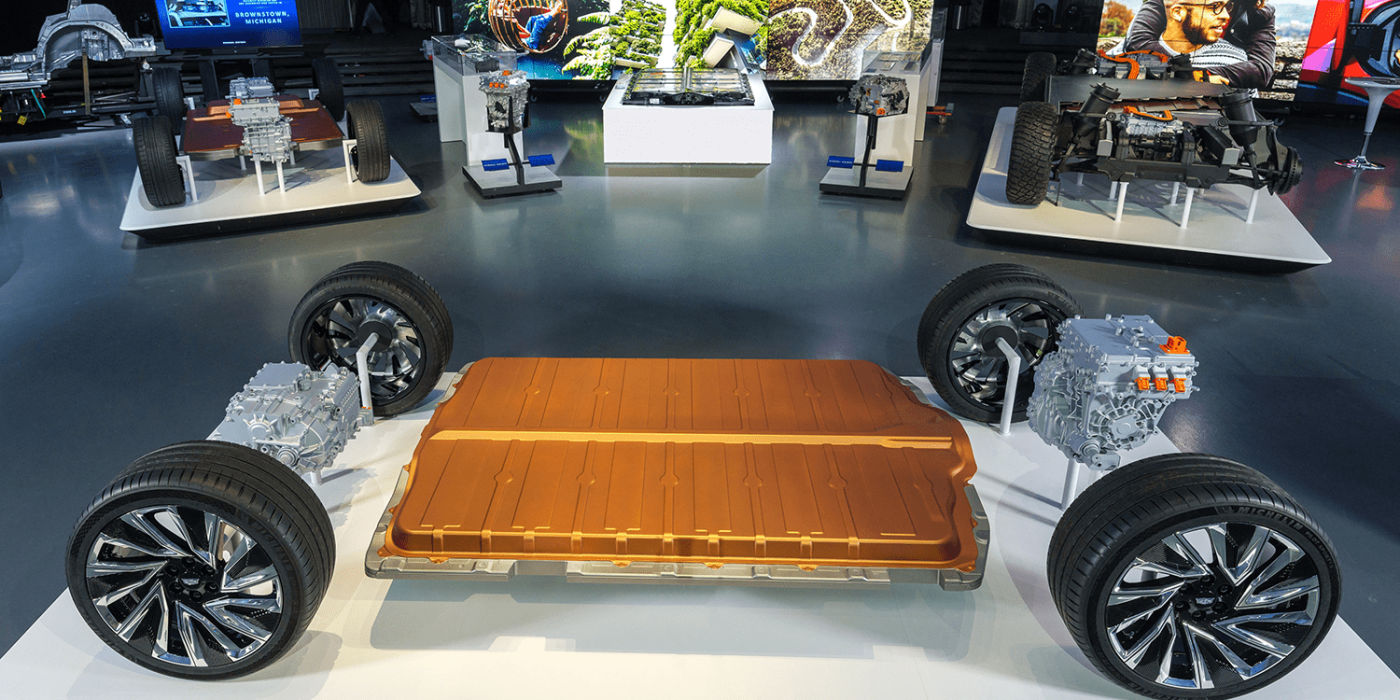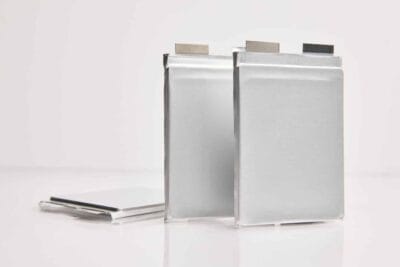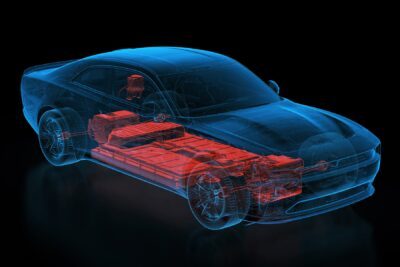GM & Samsung SDI announce plans for joint battery factory
General Motors and Samsung SDI are planning a joint battery cell factory in the USA. This is to be built with an investment of more than 3 billion dollars and go into operation in 2026. There is a surprise in the cell format that the new partners want to produce together.
The factory, whose exact location has not yet been announced, will have an annual capacity of more than 30 GWh, according to the GM announcement. Together with the cell factories from the Ultium Cells joint venture (together with LG Energy Solution), the investment of the equivalent of €2.7 billion is expected to increase GM’s total battery cell capacity in the US to about 160 GWh at full production.
It is not known by when the two partners will publish the exact location of the factory as well as details on the scope and employment forecasts. GM has so far only written that “the number of new jobs in construction and operations is expected to be in the thousands”.
What is certain, however, is that the joint GM-Samsung SDI factory will produce both prismatic and round cells with high nickel content. In March, it was speculated that Samsung SDI would supply General Motors with round cells for electric cars. At the time, there was speculation about Michigan as the location.
With the confirmation of prismatic cells and round cells from Samsung SDI, GM will use all cell formats common in electric mobility in the future, because Ultium Cells mainly manufactures pouch cells. According to Doug Parks, GM’s Executive Vice President for Global Product Development, Purchasing and Supply Chain, the new joint venture with Samsung SDI will leverage the capital and technology of both companies to create new competitive advantages for GM.
GM needs stable cell housings for cell-to-pack technology
“We will continue to scale production and optimize the chemistry of our pouch cells for performance, range and cost using new approaches pioneered at GM’s Wallace Battery Center and by our technology partners,” Parks says. “The introduction of new cell form factors will allow us to expand into even more segments more quickly and integrate cells directly into battery packs to reduce weight, complexity and costs. With multiple strong cell partners, we can scale our EV business faster than we could going it alone.”
In other words, since both prismatic cells and round cells have a solid cell housing and can therefore be mechanically loaded, concepts such as cell-to-pack or cell-to-chassis technologies become possible in the first place. This would not be possible with pouch cells, which, as foil pouches, cannot be integrated into the structure of a battery pack as a load-bearing part.
The Ultium vehicle platform was designed from the outset to allow different cell formats and chemistries to be used in the battery packs. General Motors points to the Cadillac Lyriq as an example: the version built in the USA uses pouch cells from Ultium Cells, while the model built in China uses prismatic cells in the same battery pack.
Ultium Cells already has a completed cell factory in Ohio, the second plant in Tennessee is to be expanded from 35 to 50 GWh and a third cell factory is to be built in Michigan. Plans for a fourth joint factory in Indiana have not yet materialised – instead, rumours surfaced of Samsung SDI as a partner for a fourth US battery factory for GM, which has now come to pass.
In addition to the benefits cited by Parks, the partnership with Samsung SDI is also expected to strengthen GM’s battery supply chain. “GM’s supply chain strategy for EVs is focused on scalability, resiliency, sustainability and cost-competitiveness. Our new relationship with Samsung SDI will help us achieve all these objectives,” said GM CEO Mary Barra. “The cells we will build together will help us scale our EV capacity in North America well beyond 1 million units annually.”
Yoon-ho Choi, President and CEO of Samsung SDI, adds: “We will do our best to provide the products with the highest level of safety and quality, made with our unrivalled technologies, to help GM strengthen its leadership position in the electric vehicle market.”





0 Comments